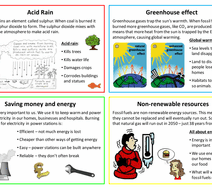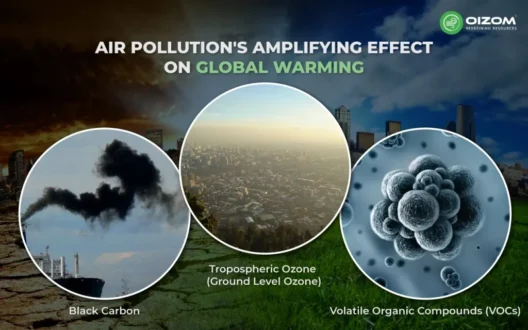South Carolina’s climate is a compelling amalgamation of temperate weather patterns and striking seasonal transitions. Nestled in the southeastern United States, this state exhibits a diverse meteorological profile influenced by geographical positioning, oceanic currents, and atmospheric conditions. The climate fosters an inviting environment, allowing residents and visitors alike to indulge in leisure activities throughout the year. However, understanding its intricacies requires delving beneath the surface of its apparent charm.
The state enjoys a humid subtropical climate, characterized by hot summers and mild winters. This classification is not merely a technicality; it reflects the lived experience of individuals who navigate the ebbs and flows of South Carolina’s weather. Summer months, particularly June through August, can be swelteringly warm with temperatures often peaking in the upper 90s Fahrenheit (mid to high 30s Celsius). Such heat is typically accompanied by oppressive humidity, creating a muggy atmosphere that blankets the region.
Nevertheless, the sultry summers are offset by the state’s picturesque landscapes, which blossom in vibrant hues. This verdant vibrance can often mask the extreme heat, luring many to the beautiful beaches lining the coast. Myrtle Beach, Folly Beach, and Hilton Head Island become sanctuaries, attracting throngs of sun-seekers who relish in the warm embrace of the Atlantic Ocean. The allure lies not only in the natural scenery but also in the cultural events that proliferate during this season, adding layers to the South Carolinian tapestry.
As the calendar turns to fall, the climate undergoes a transformation. The oppressive heat dissipates, giving way to crisper air and a kaleidoscope of foliage. Autumn in South Carolina is particularly enchanting, characterized by warm days and cool nights. Temperatures typically range from the mid-60s to mid-80s Fahrenheit (18-30°C). The shift in weather coincides with harvest festivals and various events celebrating the region’s agricultural heritage, creating a unique cultural ambiance.
With such seasonal shifts, the state’s weather patterns assume an undeniable variability. The unpredictability can be attributed to broader climate patterns including the El Niño effect and the North Atlantic Oscillation. These climatic phenomena can introduce anomalous weather events, creating conditions that deviate significantly from the expected norm. Such variances often manifest in unexpected rain showers or unseasonably warm spells, perplexing both residents and climate scientists.
Winter heralds yet another phase in the climatic cycle of South Carolina. Although the temperature rarely dips to the freezing point in the coastal areas, the winters can be marked by a chilly bite, particularly in the Upstate and mountainous regions. Here, temperatures can hover in the 30s Fahrenheit (approximately 0-5°C), while snow is a rarity, rather than a norm. The sparsity of snow allows for a slightly different aesthetic to winter, wherein the appeal of Southern charm persists without an extensive winter veil.
Nonetheless, winter also introduces its own unique allure, marked by a tranquil stillness. The state’s historical architecture, draped in the signatures of pastoral charm, stands resolutely against the backdrop of a crisp and often clear sky. A certain nostalgia permeates the air, reminiscent of simpler times, while nature takes a breath, poised for resurgence.
Spring arrives like an artist unrolling his most vibrant palette. With temperatures embarking on a steady ascent, flowers begin to bloom, enveloping the landscape in a myriad of colors. April and May can see temperatures soar into the mid-70s to low 80s Fahrenheit (around 24-28°C), invigorating the natural world and inviting outdoor activities. Festivals celebrating everything from the azalea blooms to local cuisine become commonplace, as communities rally around the return of vibrant life.
Yet, amid South Carolina’s perennial beauty lies a stark meteorological truth: the state is frequently subject to severe weather incidents, including hurricanes and tropical storms. These phenomena, most prevalent during hurricane season from June through November, underscore the escalating challenges posed by climate change. The warmer oceans and shifting atmospheric conditions have led to increased frequency and intensity of such storms, which threaten coastal communities and ecosystems. This evolving reality necessitates an urgent discourse on climate resilience and adaptation strategies.
Moreover, South Carolina’s vulnerability to the effects of climate change extends beyond hurricanes. Rising sea levels, driven by melting polar ice and thermal expansion of ocean waters, pose significant risks to its low-lying coastal areas. Saltwater intrusion threatens freshwater resources while altering local ecosystems, placing economic strains on industries ranging from fishing to tourism. These challenges afford a sobering contrast to the idyllic seasonal charms that characterize the state.
In conclusion, South Carolina embodies a unique climatic duality. The seasonal swings conjure rich experiences and compelling narratives, weaving together nature’s resplendence with the cultural heritage of the South. However, beneath this alluring veneer lies a tapestry of climate realities that demand attention. Acknowledging these complexities is crucial for fostering a deeper understanding of the region’s climatic dynamics, ensuring that its charm is not only appreciated but also preserved for future generations.
Engaging with South Carolina’s climate necessitates a commitment to environmental stewardship. Proactive measures addressing climate change can safeguard the state’s ecological integrity, allowing its seasonal beauty to flourish amidst the shifting tides of atmospheric challenges.








